Do It Yourself Air Freshener
Table of Contents
Part 1 - DIY Air Freshener Ingredients List
Part 2 - Spray vs Gel Air Fresheners
Part 3 - How to Make Essential Oil Air Freshener?
Part 4 - Which Base Works Best: Alcohol or Witch Hazel?
Part 5 - Long-Lasting Freshener Techniques
Part 6 - Where to Use DIY Air Fresheners?
do it yourself air freshener is here to help you ditch the chemicals, save a few bucks, and keep your space smelling schmick with simple, natural ingredients.
“Artificial fragrances are among the top indoor pollutants,” says Dr. Anne Steinemann, environmental scientist. No wonder more Aussies are turning to homemade options using essential oils, pantry staples, and a bit of DIY know-how.
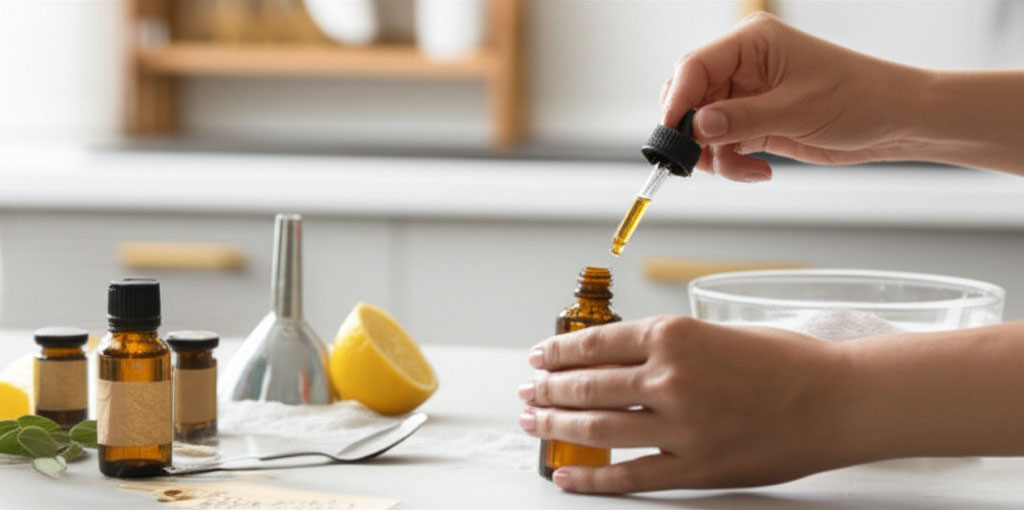
In the next few sections, you’ll learn what ingredients you actually need, how to whip up sprays or gels, which oils make your house smell like a day spa, and a few tips to make it all last longer. Let’s get cracking.
DIY Air Freshener Ingredients List
Getting started with DIY air fresheners? These basic ingredients are your go-to toolkit for fresh, chemical-free air.
Essential oils for natural fragrance
Essential oils are the heart of any homemade air freshener. Extracted from plants, these potent botanical oils pack a serious punch when it comes to aromatherapy and odorizing power. Think lavender to chill out, lemon for energy, or peppermint for a crisp vibe. A few drops in a spray bottle or diffuser will transform your space with long-lasting, natural fragrance that beats synthetic stuff any day.
Using baking soda for odour absorption
Baking soda (aka sodium bicarbonate) is a deadset legend for neutralizing odors.
Pop a spoonful in a jar with holes in the lid for passive odor control.
Mix it with oils for a custom deodorizer that actually eliminates smells, not just covers 'em up.
Bonus: It’s cheap, safe, and doubles as a household cleaner. Win-win.
Benefits of vodka in fresheners
Vodka’s not just for happy hour. This clear alcohol acts as a disinfectant and helps deodorize fabrics and surfaces. It evaporates fast, carrying volatile compounds from your essential oils into the air.
“Vodka makes a brilliant base for homemade sprays — it's scent-free and highly effective,” notes Claire Chambers, home chemist at Green Living Lab.
Mix vodka with water and essential oils.
Shake well and spray onto cushions, curtains or even the loo.
Enjoy a fresh-smelling home, minus the synthetic nasties.
Choosing distilled vs tap water
| Water Type | Purity Level | Risk of Residue |
|---|---|---|
| Distilled Water | High | Very Low |
| Tap Water | Variable | Moderate–High |
Using distilled water in DIY fresheners helps avoid mineral deposits and streaks on surfaces. Tap water can still do the job but might leave behind residue, especially in areas with hard water. If you're after a cleaner, more reliable result, stick with the demineralized stuff.
Spray vs Gel Air Fresheners
Choosing between spray and gel air fresheners comes down to space, scent style, and how fast you want the room smelling fresh. Let’s break it down.
When to choose spray air fresheners
Sprays are your go-to when you need quick action and wide coverage. Perfect for guests on the way or that mystery pong in the bathroom, aerosol and mist-based fresheners kick in instantly.
Great for instant freshness and light fabrics
Easy to carry – think car glovebox or office desk
Covers large areas fast with minimal effort
Ideal for temporary odor control
Use sprays when convenience and speed are your top priorities.
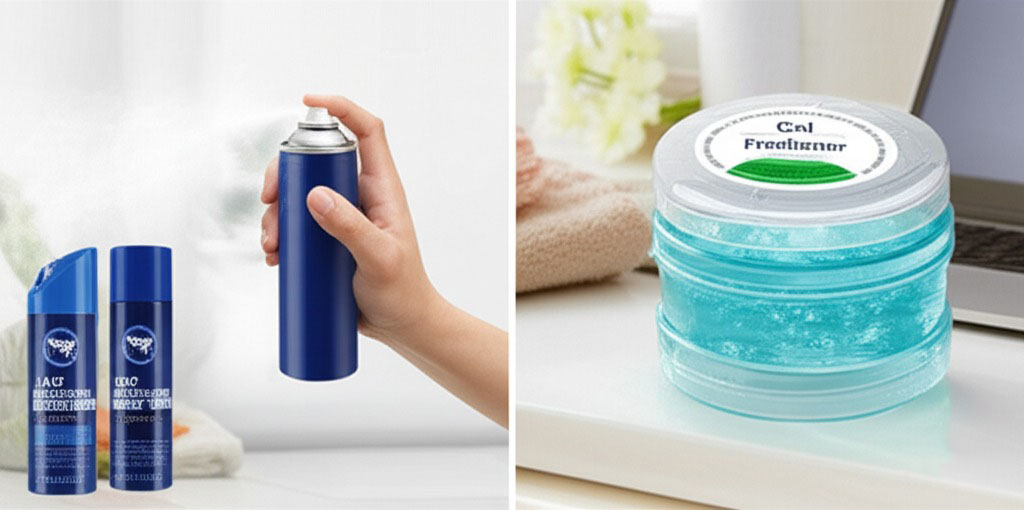
Pros and cons of gel-based recipes
Gel air fresheners are like that reliable mate – low-maintenance and always around. A solid form of DIY scent, they slowly release fragrance over weeks. Great for steady room scent without much fuss.
Pros:
Long-lasting fragrance without re-spraying
No need for power or flame
Safer around pets and kids
Cons:
Less effective in large spaces
Scent throw might be weaker
Can dry out in hot climates
“Gels are perfect for folks who prefer a set-and-forget air freshener,” says Belinda Carey, a Melbourne-based sustainable living advocate.
How to Make Essential Oil Air Freshener?
“When I first switched to homemade air fresheners, I was skeptical,” says Erin Callaghan, founder of Clean Living Australia, a low-tox lifestyle brand. “Now I would not go near synthetic sprays.” This natural alternative uses ingredients you already have at home and takes less time than boiling the kettle ☕.
To get started, gather the following supplies:
A clean spray bottle (glass is ideal)
¾ cup distilled water
2 tablespoons witch hazel
15–20 drops of essential oils (try lemon, eucalyptus, or lavender)

Steps to mix your recipe:
Pour water and witch hazel into the bottle.
Add your chosen essential oils.
Shake gently before every use.
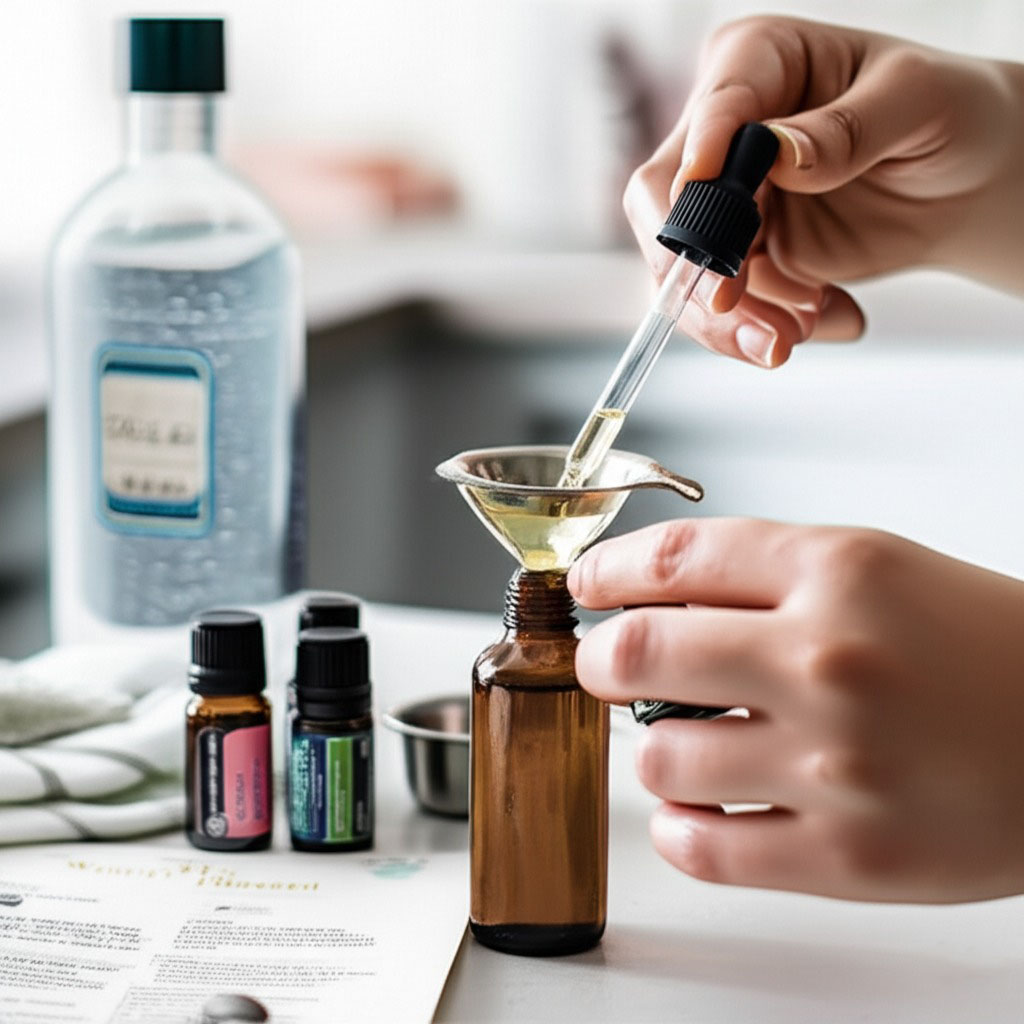
“A few spritzes and the room smells like a blooming garden,” says Erin. This easy recipe is budget-friendly, toxin-free, and refreshes fabric, air, and even the car.
According to Australian Certified Organic, essential oils used in household applications must meet strict purity and safety guidelines. Always check for certified sourcing 🌿.
Which Base Works Best: Alcohol or Witch Hazel?
Choosing the right base can make or break your DIY air freshener. Here’s a look at what really works when it comes to scent throw and staying power.
Alcohol as a scent stabiliser
Alcohol—particularly ethanol—is a go-to scent stabiliser. It evaporates quickly, helping essential oils lift and disperse evenly into the air. In perfumery, it’s known as a fixative, anchoring the fragrance so it doesn’t disappear in a flash.
Boosts aroma longevity
Blends oils smoothly without clumping
Works best at 70–90% concentration
Ethanol is cheap, effective, and widely available—ideal if you’re after a longer-lasting, consistent scent.
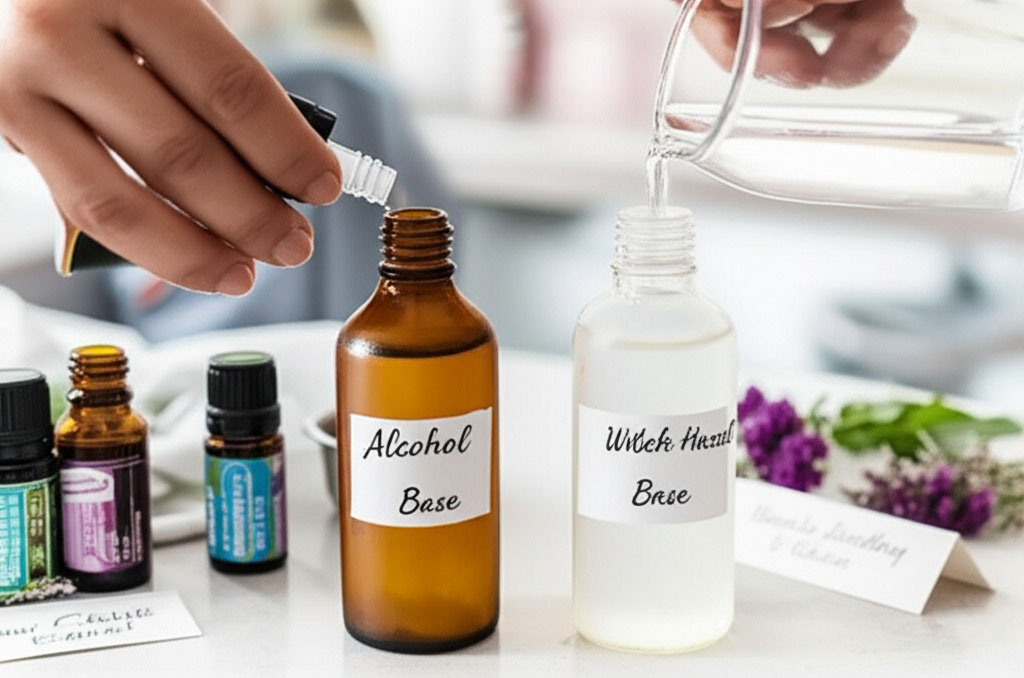
Witch hazel for gentle dispersion
Witch hazel is a soft-touch base. It’s a natural distillate that works well when you want your air freshener to feel lighter and less overpowering. You won’t get the same staying power as alcohol, but you will get:
A more soothing aroma with less chemical bite
Better skin safety for linen sprays or bedroom use
A natural, plant-based liquid that still does the trick
Think of it as the herbal tea of fresheners—gentle, easy-going, and subtle.
Mixing ratios that actually work
Get your ratios wrong, and the whole batch’s a dud. Use this formula to keep things balanced:
| Base Type | Essential Oil (per 100ml) | Scent Strength |
|---|---|---|
| Alcohol 70% | 25–30 drops | Strong |
| Witch Hazel | 20–25 drops | Moderate |
| Water only | 15–20 drops | Light |
“Mixing is chemistry,” says aromatherapist Kelly Holland Azzaro. “Even natural blends follow real formulas.” Keep a mini measuring jug handy—eyeballing rarely cuts it.
Long-Lasting Freshener Techniques
Tired of your DIY air freshener scent vanishing in a flash? These tips will help your creations smell great for much longer.
Best oil blends for longer scent
Blending essential oils with the right fixatives makes a massive difference in scent longevity. Use base notes like patchouli, sandalwood, or vetiver to anchor the blend and slow evaporation. Quick tip: Avoid overloading top notes (like lemon) without middle and base notes—your scent will lift off too quickly. "Base notes work like a slow-release perfume," says aromatherapist Rachel Hogg. Try this example blend for staying power:
| Oil Type | Example | Role in Blend |
|---|---|---|
| Top Note | Lemon | Fresh, uplifting |
| Middle Note | Lavender | Balancing scent |
| Base Note | Vetiver | Long-lasting fixative |
Container types that preserve fragrance
Glass bottles are the top choice—non-reactive and stylish.
Choose dark glass (amber or cobalt) to block UV light.
Use airtight caps to prevent oxidation and preserve aroma.
Plastic containers can leach scent or allow evaporation. For best results, avoid them entirely for long-term storage.
Storage tips to avoid evaporation
Keep your spray bottles in a cool, dark spot. High temps and sunlight speed up scent degradation.
Seal tight after every use. Volatile compounds like citrus oils evaporate easily.
Don’t store near windows or heat sources. Cupboards work better than bathroom benches.
Proper storage = longer shelf life and stronger scent over time.
Layering scents for deeper aroma
Think of your DIY scent like music—top, middle, and base notes create harmony. Blend a spicy cinnamon (middle note) with citrus (top note) and warm cedarwood (base note) for a richer, layered result.
Scent layering is like making a good lasagne—build in depth and it'll hit the nose beautifully.
Mistakes that make scent fade faster
Leaving bottles open during use
Storing freshener in warm bathrooms
Using only high-volatility oils (like eucalyptus)
Not shaking blends before spraying
Reusing poorly sealed containers
These small errors can lead to fast scent loss and wasted effort. Keep your tools tight and your oils blended right!
Where to Use DIY Air Fresheners?
Fresheners don’t just belong in the lounge room. Here’s where to put your DIY magic to real use — and how to make it work safely.
Best fresheners for bathrooms and toilets
Bathrooms are ground zero for odours, so your air freshener game needs to be strong and smart. A gel freshener near the toilet bowl or a reed diffuser on the vanity adds subtle, steady scent. For high-traffic bathrooms, natural fresheners with essential oils like lemon, eucalyptus, or tea tree are ideal—they not only smell great but double as odor eliminators.
Place near good ventilation to help circulate the scent.
Use a toilet bowl cleaner bomb with bicarb + oils once a week.
Want a quick fix? A DIY bathroom spray with 70% alcohol and oils works a charm.
Safe air freshener use in vehicles
Cars heat up fast — and cheap car air fresheners can release harmful chemicals. DIY options like hanging fresheners made from felt soaked in oils or a simple vent clip diffuser are safer bets. Just avoid oils that react with interior materials like leather or vinyl.
Don’t spray directly onto the dashboard — it can stain or degrade.
Rotate scents every few weeks to prevent nose-blindness.
“DIY sprays should be tested for allergens before regular use,” warns automotive chemist Ray Holden.
Temperature effects matter too: what smells great in winter might become overpowering in summer, so go easy on the drops.
Plastic-Free Freshener Solutions
“I started making my own air fresheners after seeing how much plastic I was tossing each month,” says Jess Munroe, an eco-conscious artisan from Byron Bay. “It felt wasteful and unnecessary, especially when I could make something better using what I already had at home.”
Glass jars, cloth sachets, and reed diffusers are taking over where plastic sprays once ruled. These options not only eliminate single-use packaging but offer a more natural scent experience using real ingredients like essential oils, dried flowers, and citrus peels 🍋.
Environmental scientist Dr. Kate Harrison backs this approach, noting, “Plastic-free home care is not a trend. It is a critical shift. Using natural materials like baking soda and vinegar in reusable containers is both effective and responsible.”
Some go-to zero-waste freshener methods include:
Cloth sachets with dried lavender and cloves
Glass jar diffusers filled with vinegar and natural spices
Simmering potpourri with orange peel, rosemary, and cinnamon sticks
These homemade options cost cents to make and leave behind nothing but clean air and peace of mind. As winner of the 2023 EcoLiving Product Innovation Award, the Byron Blend reed diffuser proves natural alternatives can be both elegant and award-winning 🌿.
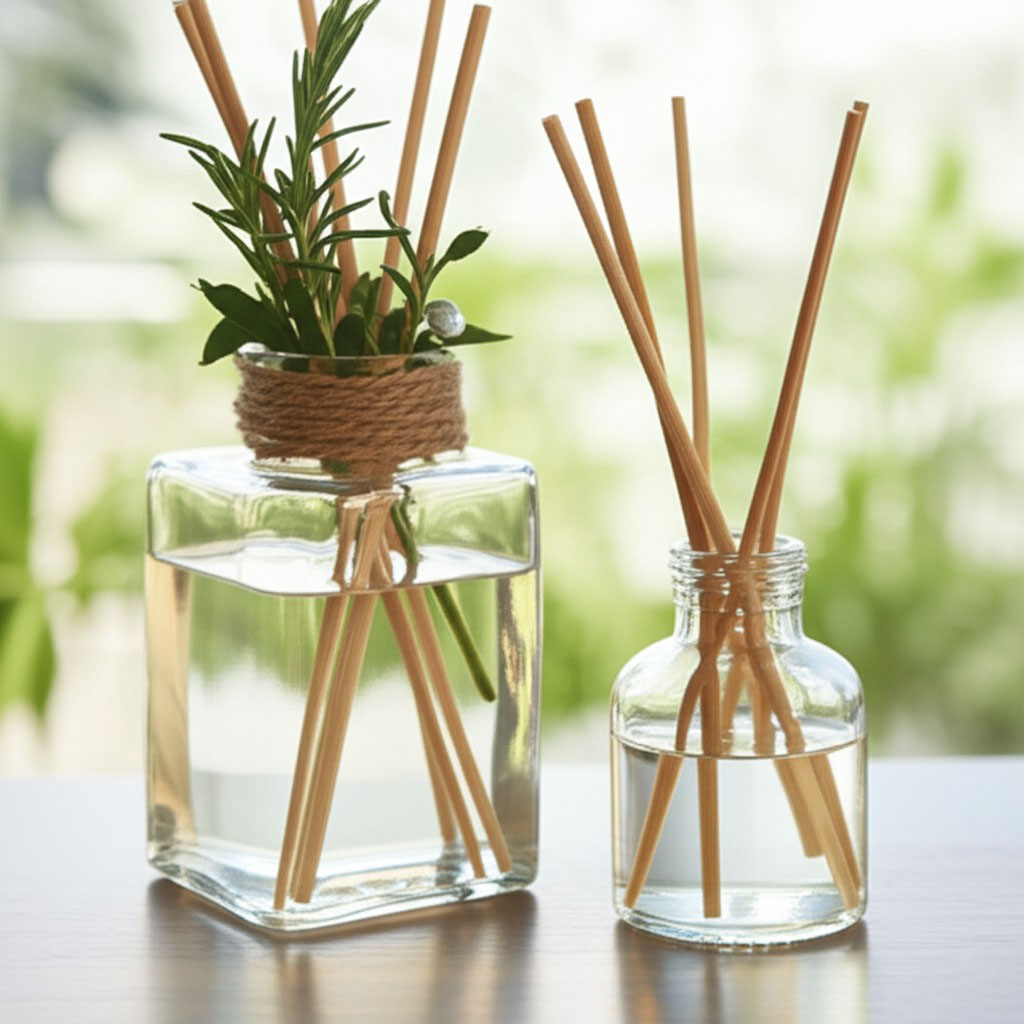
What Are the Best Essential Oil Blends?
Get your space smelling bang-on with scent combos tailored for every mood, room, and occasion.
Energising citrus morning blend
Start your day right with a zesty kick.
Orange + Lemon + Grapefruit: Bright and sharp to shake off the cobwebs.
Add a dash of Bergamot for balance.
Peppermint and Ginger bring an energising snap—perfect for your morning diffuser. Tip: Add 4 drops of Orange, 2 Lemon, 2 Grapefruit, 1 Ginger, 1 Rosemary.
Calming lavender bedtime blend
Can’t switch off at night? Try this:
Lavender (4 drops)
Chamomile (3 drops)
A soft touch of Cedarwood and Valerian This blend brings a warm, soothing hug to your bedtime routine. Great for a diffuser or pillow spray.
Herbal kitchen deodourising blend
Say goodbye to the pong of last night’s curry.
Combine Thyme, Basil, and Lemon
Add Mint or Tea Tree for a sharper clean edge
Rosemary helps refresh the whole space This mix knocks out strong kitchen odours and leaves behind a clean, herbal lift.
Festive seasonal scent combinations
Smells like Christmas, doesn’t it? Blend Ideas:
Cinnamon, Clove, and Orange = Spicy warmth
Add Fir or Pine to give that “real tree” feeling
Frankincense makes it feel classy and traditional Perfect for simmer pots or oil diffusers during the holidays.
Romantic floral scent ideas
Want your home to whisper romance without yelling it?
Try Rose with Ylang Ylang and Sandalwood
For a sensual twist, blend in Patchouli or Vanilla
A drop of Jasmine goes a long way in setting the mood Quote: “Scent is the silent language of romance,” says aromatherapist Leah Kahn.
Blends that neutralise pet smells
Got a stinky fur-baby situation? This’ll help:
| Essential Oil | Effect | Notes |
|---|---|---|
| Lemon | Freshens air | Safe in small doses |
| Eucalyptus | Kills odours | Avoid near cats |
| Citronella | Masks strong smells | Great for litter areas |
A combo of Tea Tree, Peppermint, and Lime can keep pet zones fresh—just always double-check pet safety for each oil.
You’ve just walked through the ins and outs of making your own air fresheners — from mixing oils to picking the right base and making it last. It’s easier than you think, and a whole lot more satisfying than spraying something that smells like a hospital.
“People want homes that smell real, not artificial,” says Aussie scent expert Louella Mathews — and she’s spot on.
So grab your oils, chuck on your apron, and start experimenting. With a few simple ingredients, your place will smell better than a Bunnings sausage sizzle on a Sunday.
That depends on your goal. For a fresh, uplifting vibe, citrus oils like lemon or orange are unbeatable. If you want something calming, lavender or cedarwood is the go. And for odour-busting power, tea tree or eucalyptus hits the mark.
Absolutely. Vodka is a common substitute in natural air fresheners. It helps the scent disperse evenly and keeps things shelf-stable. Just make sure it’s at least 40% alcohol (80 proof) — the cheap stuff works fine!
It varies, but most spray-based DIY fresheners last 1–2 weeks, depending on how often you use them. Gels can last longer — up to 3–4 weeks — if kept in a cool spot away from direct sun.
Glass spray bottles – best for oil and alcohol mixtures
Mason jars – perfect for gel or baking soda types
Recycled jars – great for plastic-free solutions
Car vent diffusers – ideal for on-the-go freshness
Tricky question. Some essential oils can be harmful to pets, especially cats. Avoid oils like tea tree, clove, cinnamon, and citrus around furry friends. Always check with a vet if you're unsure.
Yep, it does! Baking soda’s a natural deodoriser. It doesn’t just mask odours — it absorbs them. That’s why you’ll find it in heaps of fridge, bin, and shoe-freshening hacks.
Using a higher concentration of essential oil
Placing freshener near air vents or windows
Keeping it in a smaller or enclosed space
Refreshing the mix weekly with a few drops of oil
Technically, yes — but you’ll need to follow local rules around product labelling, safety, and potentially get a business registration. Start small, maybe test at local markets, and always be honest about the ingredients.

Leave a comment